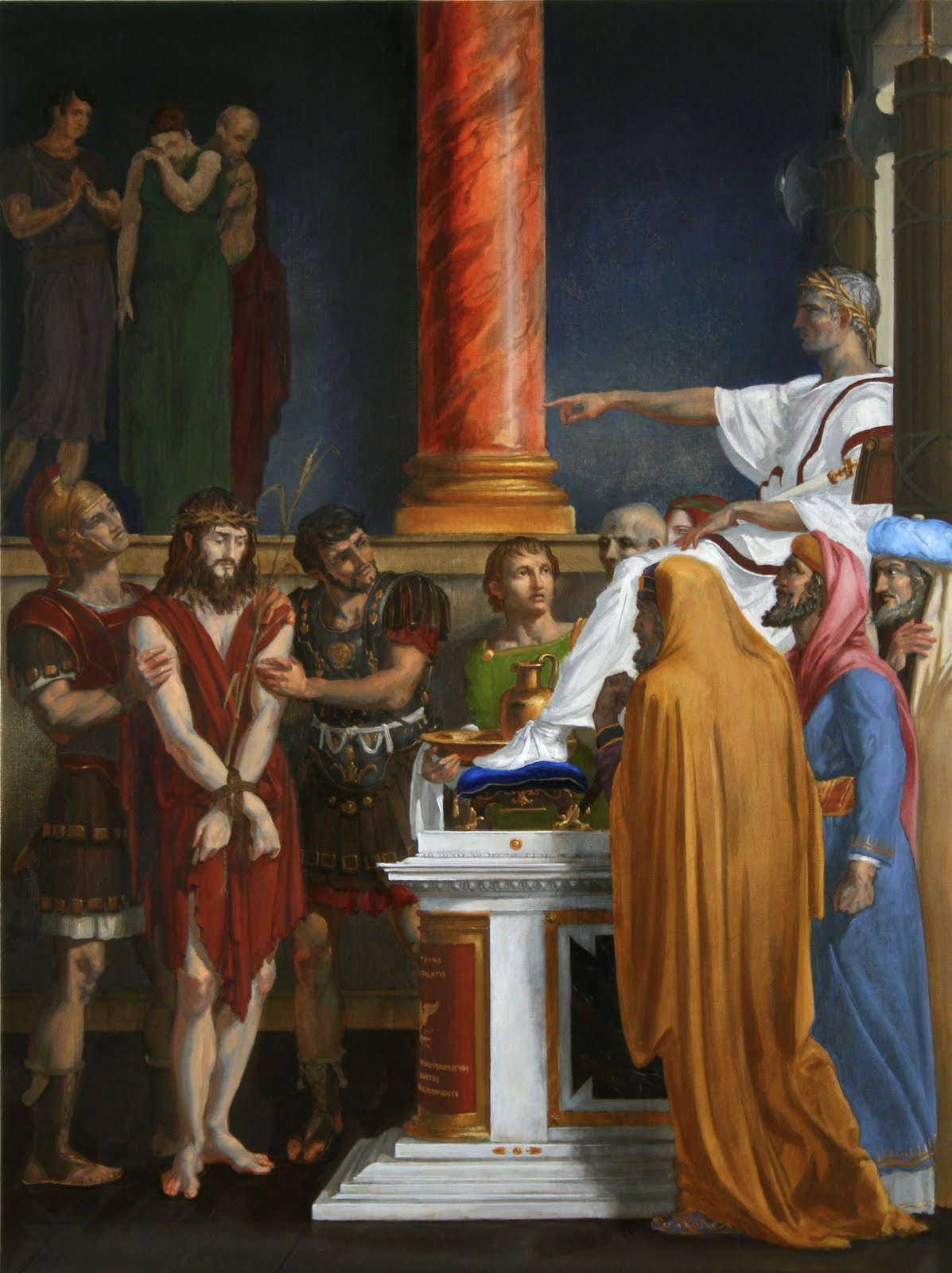 The works of New York painter Leonard Porter have been profiled on CMR in the past, but he recently unveiled a set of Stations of the Cross for the Church of Christ the King in New Vernon, New Jersey. They’ve already received some notice in the blogosphere, but Porter’s Stations are notable for more than the masterful revival of traditional painting for which he has become known. They also take on the challenge of renewing a form that has been painted many times in the life of the Church.
The works of New York painter Leonard Porter have been profiled on CMR in the past, but he recently unveiled a set of Stations of the Cross for the Church of Christ the King in New Vernon, New Jersey. They’ve already received some notice in the blogosphere, but Porter’s Stations are notable for more than the masterful revival of traditional painting for which he has become known. They also take on the challenge of renewing a form that has been painted many times in the life of the Church.
I had the opportunity to have a long conversation with Porter recently, in which he walked me through his Stations one by one. Even though the Stations as a devotion are familiar to me and though I wrote an article on Porter’s work some time ago, I was amazed at his layering of meaning and the very virtuosity of the project: 14 complex paintings completed in under a year.
As we continue through Lent I’ll be commenting on the Stations one at a time, but here are some of the important ideas that indicate how Porter’s Stations are more than the usual “buy it at the church goods store” type of art work.
1. The Stations are conceived as a set, where big arcs indicate the progression of Christ’s journey. Weather changes occur indicating the intensity of the events of each station. Locations change as well, not just as varied backdrops, but indicating the movement out of the city to the place of the crucifixion. Different levels of frenzy appear in each painting, indicating the increasing attacks on Christ which signify how he absorbed all the word’s sins. Repeating characters appear providing a secondary narrative. Questions of choice, conversion and the sins of the world appear and reappear in secondary characters and location.
2. The paintings actually indicate the movement of the person praying the Stations. In the church where these Stations are located, they start at the front left of the church with number 1 and progress backward to the rear of the church, then pick up again on the right side and work to the front. Porter has echoed these movements in his paintings, letting streets curve while changing the direction of the figures as they progress. In this way, the prayerful person reliving Christ’s via dolorosa sees him or herself more closely associated with the action of the figures. In the image above of the First Station, Pilate not only points to Christ, but also sets the viewer off in the direction of the Stations themselves.
3. Each Station is full of prefiguring and foreshadowing meaning. In Station 1 above, a skull-like face emerges just above Pilate’s knee, for instance, prefiguring the “Place of the Skull,” or Golgotha, where Christ will be crucified. If you look closely at the Roman soldiers holding Christ you will see symbolic ornament on their clothing which will come to play as the Stations unfold. More will be said on that at a later date.
4. The design of the Stations themselves relates to Christ’s torn body. The Stations are filled with dark areas, “holes” of black paint which suggest that the scene itself shows the world “torn” just as Christ’s flesh will be torn. Yet Christ always appears with a certain radiance and a face which indicates the focus of His mission. Light and dark areas are contrasted, indicating the light of Christ being brought to the darkness of the world.
I’ll be bringing the Stations one by one to CMR as Lent progresses, doing an artistic exegesis on each one. I think CMR readers will be as amazed as I was upon learning of the artistic sophistication and theological complexity of Porter’s work.

Leave a Reply